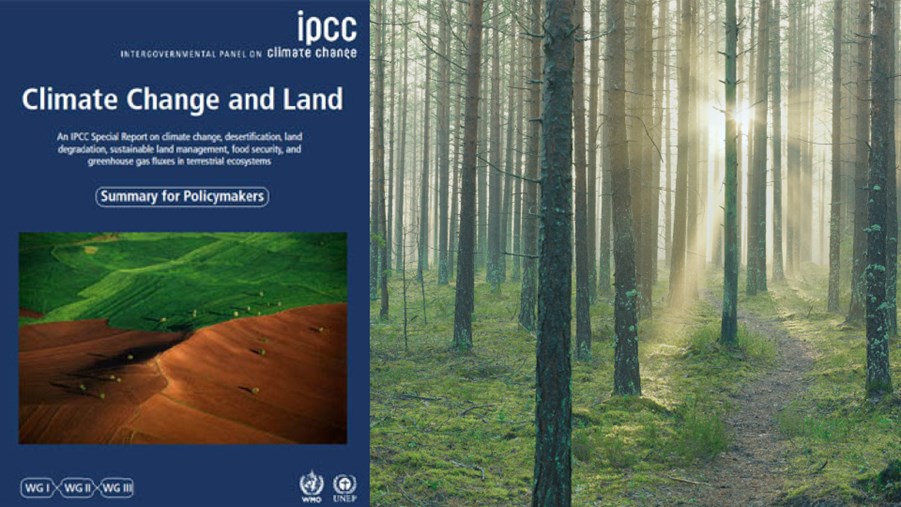
How does ownership affect forestry?
How does the form of ownership affect how the forest is managed and what it is used for?

Researchers Gert-Jan Nabuurs and Gustaf Egnell discuss the parts of the IPCC's Special Report on Climate Change and Land that relate to forestry and forest products.
The UN Intergovernmental Panel on Climate Change's Special Report on Climate Change and Land was published in August 2019. Comments on the report tend to focus on agriculture, but what findings are of interest to Swedish forestry?
The report builds on an earlier special report from 2018 that discusses the possibilities of limiting temperature increases to 1.5°C, and provides an updated assessment of the current state of knowledge, while also striving for uniformity and comparability with previous and future reports.
In the IPCC's Fourth Assessment Report from 2007, there was already sufficient overall knowledge of the contribution of sustainable active forestry and forest products to the mitigation of climate change. But Gustaf Egnell, a researcher focusing on the sustainable use of forest biomass at the Swedish University of Agricultural Sciences in Umeå and secretary of the Committee on Climate and Land Use towards 2030 at the Swedish Royal Academy of Agriculture and Forestry, thinks that the current special report has clear advantages:
"This report is more balanced than previous ones as regards forestry. It now highlights clearly that forestry is a good idea to combat climate change. It talks about bringing to an end the felling of forests without reforestation, about substituting fossil products with renewable ones, and it says that forestry is fundamentally good for the climate and humanity. At the same time, the IPCC is clear in saying that there are limitations in the forest's contribution to mitigate climate change."
Chapter 2, Land-Climate Interactions, is most relevant for Swedish forestry specifically, according to Gert-Jan Nabuurs, Professor in European Forest Resources at Wageningen University in the Netherlands and coordinating lead author for the field of agriculture and forestry in the IPCC Seventh Assessment Report due in July 2021.
"Chapter 2 shows, if only on a broad international scale, that we in forested areas can further enhance the role of managed forests. There are various ways of doing this: sometimes by stimulating growth, other times through the manufacture of forest products, and also to some extent through bioenergy production. But with a large number of forest owners who want to use their forest in different ways, other approaches are also possible, such as earmarking small areas of forests as reserves and thus sequestering more carbon on site. Chapter 2 also highlights the fact that we will need to deal with the effects of climate change more and more moving forward."
The climate models behind the report also show that we can expect larger temperature increases at higher latitudes, such as in Scandinavia.
"This increases the risk of more widespread disruptions in Boreal and northerly temperate forests, with droughts, fires and harmful organisms. Climate change also increases the risk of an overall reduction of vitality in the forest. So expect future forestry to be more difficult to plan. In case of extensive damage, it is vital to have a plan in place for how fellings can be redirected without compromising wood supply," says Egnell.
Regarding sustainable forestry, the report has issued some warnings about large-scale investments in bioenergy. While the production of biomass for bioenergy needs to be scaled up significantly to meet the 1.5-degree target, it must not jeopardise food production.
"The report is positive towards increasing forest area within reasonable limits, and it also indicates that if different residual streams in the production chain are utilised, the need for a larger area can be reduced At the same time, it warns that the removal of nutrient-rich branches and upper parts risks impoverishing the woodland soils in the long run. It is also important for biodiversity that the growing need for bioenergy does not affect the amount of dead wood, so future biodiversity measures should focus more on the quality of dead wood than on the quantity," says Egnell.
Although the report clearly indicates the climate benefits of managed forests and of the use of renewable forest resources, a debate on how the forest makes its best contribution to mitigate climate change is still ongoing in society and the research community. In this respect stakeholders come to different conclusions, which, Egnell suggests, makes it possible for both those who would like to see the forest being left untouched and those who would rather see it being used to put their arguments forward with scientific support.
"The scientific 'truth' of how the forest makes its best contribution to the benefit of the climate is to be found by weighing together all the relevant studies and evaluating their quality. Since the 'truth' also depends on context, conclusions vary depending on which forest is being taken into consideration."
Storgatan 19
Stockholm
Box 55525, 102 04 Stockholm, Sweden
+46 (0)8-762 72 60
We use cookies to improve your browsing experience (Swedish text)
Privacy policy (Swedish text)